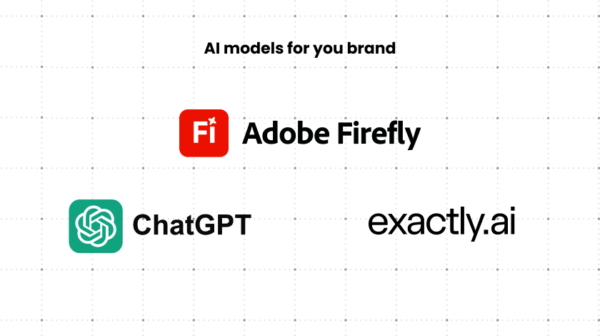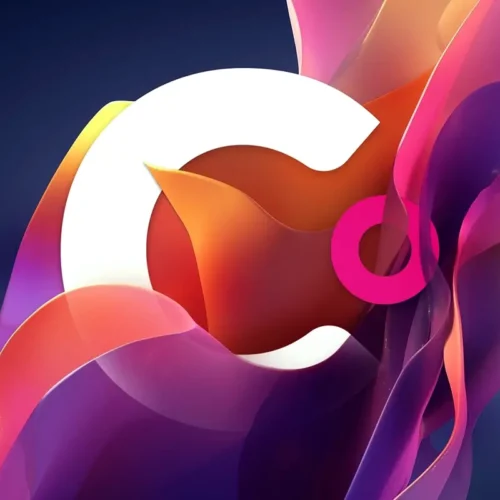61% of people around the world are wary about trusting AI systems and 73% are concerned about AI’s potential risks
Brand differentiation is mission critical in the B2B landscape, where websites and digital experiences can feel bland, buttoned up, and monotonous. As AI becomes table-stakes in digital branding, a strategic, human-centric approach can help you stand out from the crowd.
With AI use exploding across the digital world, it may be tempting to throw an AI-powered tool at every digital touchpoint. But reckless adoption can actually damage your brand. The organizations that succeed in this new age will be those that implement AI thoughtfully, using it to augment rather than replace human creativity, empathy, and ethical judgment.
Here are four ways to maximize efficiencies, streamline marketing processes, and strengthen B2B brand identity by pairing AI-powered solutions with your best people.
1. Bye-bye minimalism, hello surrealism
Brand experiences are all about emotion. What does your B2B website make users feel? (Hint: If the answer is nothing, they’re not likely to remember the experience for long, if at all.) New image-generating AI models are changing the game for digital designers, making it possible to create surreal visuals that evoke a deep emotional response, making your brand experiences more memorable.
Steve Ohanians, co-founder and director of strategy at Clear, explains, “Generative AI really excels at creating beautiful imagery that tells complex, metaphoric stories. It’s actually much better at creating this type of imagery than it is at creating simple images.”
By tapping into metaphor and abstraction, surreal visuals can tell complex stories that evoke a deep emotional response, making your brand more memorable by association. Fueled by the creative strengths of AI, Adobe’s Creative Trends 2025 report also highlighted this trend, calling it “Fantastic Frontiers,” and saying, “In the design space, generative AI is allowing for greater complexity and the visualization of more complex ideas and subjects.”

These new AI image capabilities empower your designers to push the envelope, with the ability to quickly visualize far-fetched ideas, locations, and concepts, blending fantasy with reality in exciting new ways and making B2B blandness a thing of the past. The trick is to be intentional about what you’re generating and maintaining clear messaging to create a distinct, ownable aesthetic. Remember, the goal is differentiation—not confusion.
2. Brand consistency on AI-governed autopilot
Ensuring your digital brand experience is consistent across mediums, touchpoints, and time is crucial to building brand strength and standing out in a competitive market. In the past, this had to be managed manually—with individual creators, designers, and developers tasked with ensuring their output was on brand. Now, AI-driven models can be built and trained to ensure every piece of digital brand output aligns with brand guidelines. This includes imagery, copy, and even motion graphics.
For example, Adobe Firefly is a generative AI platform that can quickly create thousands of brand-specific images, graphics, or other assets, making it possible to scale up content production without worrying about going off brand. Exactly.ai offers a similar tool, with “bespoke ai models, built for your brand.”

You can train AI models to keep copy on brand, too—for example, you could train ChatGPT on your brand tone, voice, and messaging strategy, then feed it the right content and ask it to create on-brand copy on the fly. Or you could train an AI model to look at your website and flag anything that feels off-brand, so you know what you need to update.
Putting brand consistency on AI-governed autopilot means you can rapidly scale up content production for campaigns, ABM strategies, or even personalized client communications. Strategic implementation unlocks new levels of efficiency and productivity—without compromising quality.
3. The importance of transparency
Ethics is a hot topic when it comes to AI, and transparency is one of the pillars of ethical AI use. While most businesses are all-in for AI due to the efficiencies it unlocks, many consumers are still wary due to concerns around information accuracy and data privacy. To overcome this hesitation and build trust in your brand, carefully consider where to be transparent about your use of AI to generate content. According to KPMG 61% of people around the world are wary about trusting AI systems and 73% are concerned about AI’s potential risks.
While there has been plenty of discussion about ethical AI use, there are no rules right now governing when and how companies have to disclose that they’re using it. That means you need to decide for yourself how transparent you want to be. Then, create internal systems to determine which content requires “this was generated by AI” exposure.
For example, if you’re using AI to generate marketing communications, you probably want to add a footnote telling users that’s the case, while using an AI-generated image on your homepage is less likely to raise concerns.
It’s also important to figure out what kind of AI-generated content needs to be reviewed by a human before it’s sent out into the digital world—again, marketing communications are a good example of content you probably want eyes on before it reaches your customers. Regularly auditing AI-generated output will help you to identify and remove potential biases or stereotypes from your content and protect your brand reputation.
By promoting transparency and accuracy in AI-generated content, you can build trust in your brand and position your company as a thoughtful leader in a space where ethical concerns are increasingly prominent.
4. Human instinct + AI magic = the perfect couple
Perhaps the most important factor to remember when it comes to AI implementation is that you shouldn’t be looking to outsource your digital branding entirely—but rather to augment it. AI is a tool, not a replacement, for creative instincts, strategic thinking, and brand storytelling. The goal is to empower your best people to do their best work even more efficiently by giving them the right tools.
AI is a tool, not a replacement, for creative instincts, strategic thinking, and brand storytelling
B2B brands that adopt a purely AI-driven content strategy risk diluting their message and sounding like every other competitor. This is the exact opposite of differentiation. If you build an AI-driven content engine and hand over the keys, you’re likely to end up “same-ifying” your brand rather than making it stand out.
Think of AI as a creative partner, not your creative director. Lean into its strengths, and look to your team to support its weaknesses (while also leaning into their strengths). For example, AI is not very good at strategy, or even creativity—especially when thinking about brand experiences. That’s why inputs are so important. When you ask AI to create something, what it does is look at millions of data points to identify commonalities and then presents those to you as the best answer. This is also the opposite of differentiation. To create truly unique, memorable brand experiences, you need people in the equation.
Ensuring the best possible outputs, which tell your brand story and strengthen your brand identity in the age of AI, means keeping people involved in key processes. Generating ideas. Reviewing content. Driving strategy. Every output should be curated, edited, and refined by your designers, strategists, and technologists to ensure alignment with your brand and product strategy. The key is figuring out the best ways to put AI to work for your team.
Welcome to the era of AI digital branding
At Clear Digital, staying ahead of the curve is in our DNA—and that includes understanding the latest AI enablement and digital branding trends. Our team is ready to help you bring your B2B brand to the forefront of the digital landscape with a unique blend of technical skill, creative perspective, and execution expertise. If you want to drive next-level B2B results, we want to help. Let’s work together.






